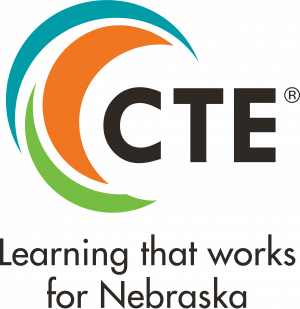Size, Scope, and Quality
Size
Each student, including those from special populations, is provided with equitable access to CTE programs and activities, including CTSOs
- Alternative education programs include CTE
- Emphasis is given to the recruitment and retention of students into programs non-traditional for their gender
Scope
- CTE students are provided with an ongoing, organized, systemic framework for career development from middle grades through postsecondary;
- Career guidance and development information and support are available to all students
Secondary:
- All secondary students develop and maintain a personal or individualized learning plan
- A career information system (such as Nebraska Career Connections) is available for all student and parent use
Secondary programs utilize the Nebraska School Counseling Model and the Nebraska Career & Technical Education Model (https://www.education.ne.gov/nce/careerdevelopment/
Quality
Recipients meet or exceed performance targets established for state and federal Perkins accountability indicators
- Accountability and enrollment data, per Section 113, are available and submitted annually
- Resources are directed towards addressing disparities in performance across subpopulations of students
- Accessibility and/or accommodations are provided to each student, including those who are members of a special population
Size
Local CTE systems include programming inclusive of opportunities that represent the broad range of available Nebraska CTE career fields/program areas, including:
- Agriculture, Food, and Natural Resources
- Business, Marketing, and Management
- Communication & Information Systems
- Health Sciences
- Human Sciences and Education, and
- Skilled and Technical Sciences
At the secondary level:
- No less than one state-model program of study shall be offered, and
- No less than one state-authorized Career & Technical Student Organization (CTSO) aligned with the CTE courses and content offered in the school(s) is available for student participation.
At the postsecondary level:
No less than one program in each of Nebraska’s career field areas that maintains an occupational focus and prepares students for entry level employment, advanced skill development, and/or advanced training as identified through the reVISION process will be offered, and
No less than one state-authorized CTSO at the primary campus level, if applicable
Scope
- CTE programs are aligned to the Nebraska Career & Technical Education Model (see Figure 2).
- A comprehensive understanding of and strong experience in all aspects of an industry are provided to students, including:
- occupations and careers that represent the full scope of an industry;
- technology, workforce and community issues, and health, safety, and environmental issues related to the industry
- Emphasis is placed on developing essential workplace skills through integration of Nebraska’s Career Readiness Standards throughout the local education system or institution
- CTE programs are aligned with local/regional workforce and economic development efforts
- Appropriate assessments, both formative and summative, are utilized to measure and encourage student achievement;
- CTE programs include opportunities for dual-credit and/or credentialing
- occupations and careers that represent the full scope of an industry;
Secondary:
Secondary CTE course instruction addresses at least 90% of the state-approved standards
Quality
- CTE programs of study and courses are delivered by instructors who meet Nebraska’s requirements to teach at the secondary and/or postsecondary level(s)
Professional development is provided to school counselors, teachers/instructors, paraeducators, and administrators to enhance student learning
- Professional development includes both technical and pedagogical knowledge and skill development opportunities
- Contextual learning opportunities are embedded across content/program areas
- High quality, standards-aligned instructional materials are accessible to each student
- Industry-grade equipment and technology encourage student attainment of relevant, rigorous technical skills;
- Facilities, equipment, and resources are of sufficient size and quality to accommodate participating students and keep them safe
Size
Local CTE systems provide opportunities for students to participate in coursework through a wide array of delivery models, including classroom, lab, workplace, and other applied experiences
Scope
- Promotion of expanded learning and leadership opportunities for students through components such as workplace experiences and CTSOs
- Opportunities for students to participate in distance and/or blended CTE programs and courses
Quality
Offering meaningful workplace learning opportunities to all students, including those from special populations, that align with their CTE programs of study
Size
- Local CTE program offerings are informed by labor market information (LMI) to identify alignment to regional and statewide employment projections
- Essential partnerships are established that link CTE in schools and community colleges with business and industry, workforce, economic development, and government agencies
Scope
- Alignment between secondary and postsecondary CTE programs with evidence of joint planning. This may include but is not limited to articulation agreements, dual-credit opportunities, opportunities for the attainment of industry recognized credentials, and aligned CTE curriculum
- CTSOs are aligned with CTE curriculum
Quality
- Career pathways offer multiple entry and exit points for students
- Partnerships are developed to enhance CTE
- CTE programs and programs of study offerings are systematically reviewed by the local or regional advisory council for alignment and quality
- Secondary and postsecondary partnerships assist in student transitions
- Parents, students, and stakeholders are consulted, as appropriate, for input and evaluation of CTE programs






